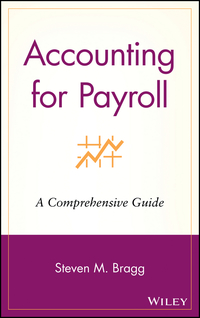

The Art League is a not-for-profit organization dedicated to promoting the arts within the community. There are two programs conducted by the Art League: (1) exhibition and sales of members' art (referred to as Exhibition) and (2) Community Art Education. Activities of the Art League are conducted by a part-time administrator, a part-time secretary- bookkeeper, and several part-time volunteers. The volunteers greet visitors, monitor the security of the exhibit hall, and handle the sales of art to the public. Art on exhibit is considered the property of the member artists, not the Art League. The post-closing trial balance for the Art League as of June 30, 2019. is shown here. ART LEAGUE Post-closing Trial Balance June 30, 2019 Credits Debits $ 2,455 13,711 6,200 1,300 10,145 $ 2,586 Cash Short-term Investments Grants Receivable Prepaid Expense Equipment Allowance for Depreciation Equipment Long-Term Investments-With Donor Restrictions Accounts Payable and Accrued Expenses Deferred Revenue Net Assets Without Donor Restrictions Net Assets With Donor Restrictions-Programs Net Assets With Donor Restrictions-Permanent Endowment Totals 5,927 2,Bes 4,400 9,171 14,845 5,927 $39,738 $39,738 Following is information summarizing the transactions of the Art League for the year ended June 30.2020. 1. During the year, unrestricted cash was received from the following sources: grants determined to be non-exchange transactions. $13.200. of which $5.400 had been reported as receivable on June 30, 2019; annual contributions from fund drives and other unrestricted gifts. $14.021: membership dues. $17.085; tuition and fees for educational workshops. $7.134; and sales of members' art. $12,170. of which 20 percent represents commissions earned by the Art League. 2. Interest earnings were as follows: interest on investments without donor restrictions totaled $702 interest on investments restricted for programs totaled $941; interest on investments in the permanent endowment totaled $360 (these investment earnings are restricted for program use). 3. Grants receivable of $5,340 were recorded at year-end on a grant to complete and deliver a survey of art programs conducted in its county (the grant was determined to be an exchange transaction). Of the $5.340 the Art League had invoiced. $3.280 related to work done this year with the remaining $2,060 to be completed the first part of the new year and thus was reported as deferred revenue at year end. 4. The Art League receives free rent from the city at an estimated value of $19.600 a year. 5. Expenses incurred during the year were as follows: salaries and fringe benefits, $48,500: utilities $3,240: printing and postage. $1.470: and miscellaneous, $800. As of year-end, the balances of the following accounts were Prepaid Expenses. $1.000. and Accounts Payable and Accrued Expenses. $2.986. 6. During the year. $3.700 of short-term investments were sold with the proceeds used to purchase two computers and a printer at a cost of $2.995. The resources used were restricted for the purchase of equipment. 7. In accordance with the terms of the Art League endowment, income earned by the endowment for the provision of free art instruction for children with disabilities was provided at a cost of $985. This amount was allocated to community art education. 8. Depreciation on equipment in the amount of $1,802 was recorded. 9. Expenses for the year were allocated 30 percent to Exhibition Program. 30 percent to Community Art Education, 25 percent to Management and General Expenses, and 15 percent to Fund-Raising. 10. Proceeds of art sales, net of commissions charged by the Art League, totaled $9,736. This amount was paid to member artists during the year. 11. All nominal accounts were closed at year-end. b. Prepare journal entries to record these transactions. Expense transactions should be initially recorded by object classification, unless otherwise instructed; in entry 9. expenses will be allocated to functions. (If no entry is required for a transaction/event, select "No Journal Entry Required" In the first account fleld. Do not round Intermedlate calculations. Round your answers to the nearest whole dollar amount.)








